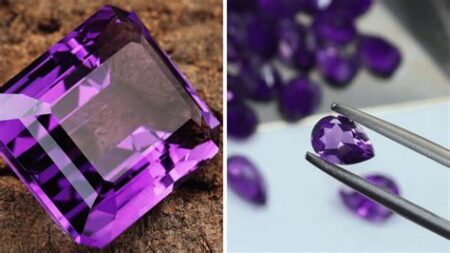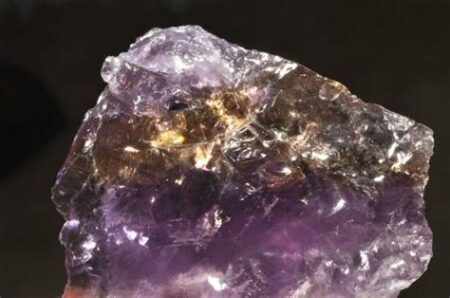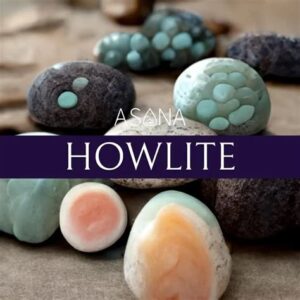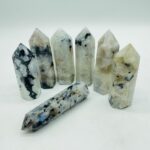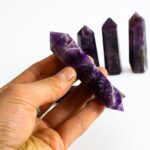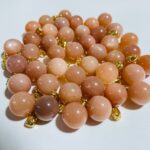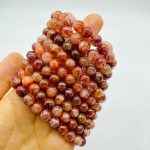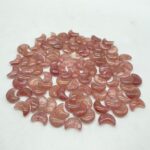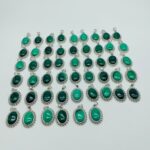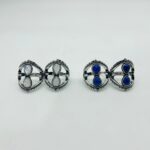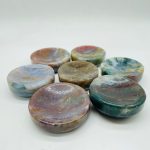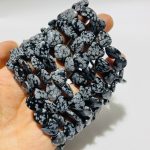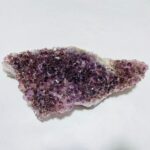Introduction
Crystals, with their captivating beauty and enigmatic energies, have long been treasured in various cultures for their spiritual and healing properties. Each crystal bears unique markings and inclusions that can provide valuable insights into its origin, composition, and energetic qualities. This comprehensive crystal marks identification guide empowers you to unlock the secrets hidden within the intricate patterns of gemstones.

Understanding Crystal Growth and Formation
Crystals form over millions of years through a process known as crystallization. As mineral-rich solutions or molten rocks cool and solidify, atoms and molecules arrange themselves in highly ordered lattice structures. This orderly alignment gives rise to the characteristic shapes and faces of crystals.
Types of Crystal Marks
Crystals can exhibit a wide variety of marks, including:
- Inclusions: Minerals or other impurities trapped within the crystal during its formation
- Growth Twins: Crystals that have grown together in mirror image or symmetrical formations
- Phantoms: Layers of different colors or minerals that represent growth pauses
- Etchings: Patterns caused by chemical weathering or erosion
- Fractures: Breaks or cracks in the crystal’s structure
Interpreting Crystal Marks
Deciphering crystal marks requires a combination of observation, research, and intuition. Consider the following factors:
- Shape and Size: The shape and size of a mark can provide clues about its origin and growth conditions.
- Color and Clarity: Inclusions and phantoms can reveal information about the mineral composition of the crystal.
- Location: The location of a mark within the crystal can indicate its formation process or subsequent alteration.
- Energetic Properties: Some believe that crystal marks influence the energetic qualities of a stone.
Beneficial Marks
Certain crystal marks are considered beneficial, including:
- Inclusions: Some inclusions, such as rutile needles in quartz, enhance a crystal’s energy and cleansing abilities.
- Growth Twins: Growth twins often symbolize balance and harmony, promoting inner peace and spiritual growth.
- Phantoms: Phantoms represent periods of transformation and new beginnings, fostering resilience and personal development.
Unfavorable Marks
Some crystal marks may be perceived as unfavorable, such as:
- Fractures: Fractures can weaken a crystal’s energy and stability.
- Etchings: Etchings can compromise a crystal’s appearance and energetic qualities.
- Pockmarks: Pockmarks, which are small indentations in the surface of a crystal, can indicate stress or damage.
Table 1: Common Crystal Marks
| Mark | Description | Examples |
|---|---|---|
| Inclusion | A mineral or impurity trapped within the crystal | Rutile needles in quartz |
| Growth Twin | Crystals that have grown together in mirror image or symmetrical formations | Smoky quartz |
| Phantom | Layers of different colors or minerals that represent growth pauses | Amethyst |
| Etching | Patterns caused by chemical weathering or erosion | Lace agate |
| Fracture | Breaks or cracks in the crystal’s structure | Clear quartz |
Tips for Identifying Crystal Marks
- Use a magnifying glass or loupe to examine crystal surfaces closely.
- Observe the crystal under different lighting conditions, as certain marks may become more visible in various angles.
- Refer to books, online resources, or consult with a crystal expert to identify different marks.
Applications of Crystal Marks Identification
Crystal marks identification serves multiple purposes, including:
- Authentication: Marks help distinguish natural crystals from imitations or synthetic stones.
- Origin Determination: Marks can provide insights into the geographical origin and geological history of a crystal.
- Energy Assessment: Some practitioners believe that crystal marks influence the energetic properties of a stone.
- Crystal Healing: Marks can inform the selection of specific crystals for healing and therapeutic purposes.
- Jewelry Design: Crystal marks, when properly highlighted, can enhance the aesthetic appeal of jewelry.
Table 2: Crystal Marks in Jewelry Design
| Mark | Jewelry Applications | Examples |
|---|---|---|
| Inclusions | Accentuate sparkle and brilliance | Tourmaline with rutile needles |
| Growth Twins | Create unique and eye-catching patterns | Brazilian amethyst |
| Phantoms | Add depth and interest | Smoky quartz |
| Etchings | Enhance surface texture | Lace agate |
| Fractures | Can be hidden or filled with resin | Clear quartz |
FAQs
-
Can crystal marks change over time?
Yes, crystal marks can change gradually over time due to exposure to heat, pressure, or chemicals. -
Are all crystals marked?
Not all crystals exhibit visible marks. Some crystals, such as diamond and ruby, are typically eye-clean and free of inclusions. -
How do I know if crystal marks are natural or artificial?
Natural crystal marks often appear random and organic, while artificial marks may be more uniform and symmetrical. -
Do crystal marks affect the value of a crystal?
Crystal marks can influence the value of a crystal depending on their rarity and desirability. Some inclusions, such as rutile needles in quartz, can enhance a crystal’s value. -
Can I remove crystal marks?
Some crystal marks, such as etchings, can be removed through careful chemical treatment. However, it is important to consult with a professional before attempting any alteration to a crystal. -
Do crystal marks have metaphysical properties?
Some believe that crystal marks influence the energetic qualities of a stone, but these beliefs are not scientifically proven. -
How can I use crystal marks to choose crystals for healing?
Certain crystal marks, such as growth twins and phantoms, are associated with specific healing properties. By considering the marks present in a crystal, you can select stones that best resonate with your individual needs. -
What are some innovative applications of crystal marks identification?
Crystal marks identification can inspire novel applications in areas such as nanotechnology, biomedicine, and materials science. For example, the unique etching patterns on crystal surfaces could be utilized to develop highly sensitive biosensors or advanced optical devices.

